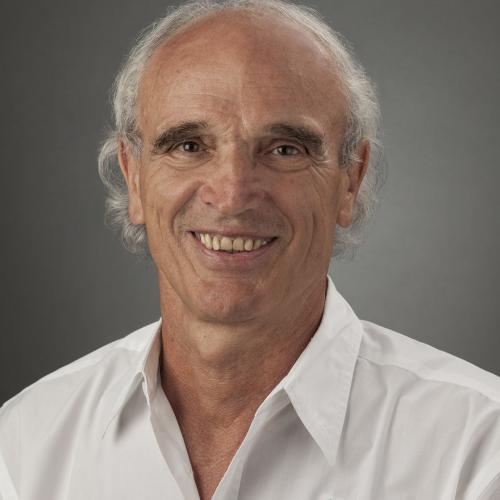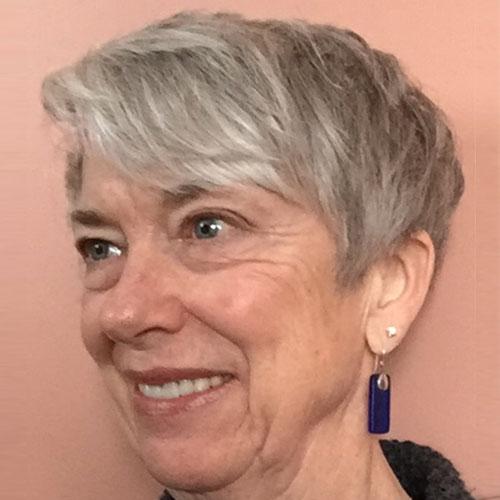In this class, we will cover numerous approaches and techniques for the eyes, the intracranial Meninges, as well as techniques for CSF in three different compartments of the cranium including the glymphatic pathways and the cisterns.
1- First of all, we will help balance the whole CNS then specifically the optic pathways.
The techniques for the eyes and optic pathways use noninvasive fluid and fascia approaches. They can help many ocular problems as well as general health problems. For example, we will work on the choroid layer for astigmatism. The work on the eyes may release structures in the whole body; this is not just limited to postural changes. For example, the technique for strabismus can help release this condition in a few minutes but will also help release the eyes, brain, and the rest of the body. In case of LASIK refractive surgery, for example, this work may help decrease the presence of halos around lights at night-time, but it may also help day vision and global posture.
2- It is not easy to work on every fiber in every direction of the intracranial meninges. Beryl E. Arbuckle, DO, FACOP, one of the first teachers in the faculty of WG Sutherland, developed a technique that has unfortunately been lost to the osteopathic world. Her numerous, precise dissections resulted in beautiful maps of the dural network.
The specific tensegrity work on the cranial meninges is extremely important, for example, for conditions such as motor vehicle accidents, strokes, chronic headaches as well as for children with cerebral palsy, autistic spectrum disorders, Down syndrome, chronic meningitis, etc.
We will use a curved biotensegrity model to release the intracranial meninges.
By releasing the meninges properly you will also help all the membranes of the body, help modify the tensions inside the cranium, thorax, abdomen, and pelvis, and support the flow of intracerebral sinuses including sagittal sinuses, straight sinuses, the vein of Galen, the vein of Rosendal, etc.
We will work with a specific concept of stress bands and reinforcement of the cranial bones (“buttresses”) that can indicate problems with the meninges.
3- The new scientific model for CSF physiology is probably going to make a revolution in our concept of fluid circulation.
We will demonstrate another way to help “drain” CSF in the whole brain. We will assess the fluid in three spaces:
- Ventricular system
- Brain parenchyma and the glymphatic system
- Subarachnoid spaces (SAS), including cisterns of the brain (waterbeds)
4- The work on the intrinsic electricity of the brain and brain electromagnetic field is something that can be used in difficult cases.
Class length 3 days
** If you wear contact lenses, please bring your glasses to this class so techniques can effectively be practiced.
Conflict of Interest: All classes presented by Chikly Health Institute have no financial conflict of interest.
CHI is not sponsored by outside organizations or corporations.
Please read "Our Policies" for more information: https://chiklyinstitute.com/Policies
• Contact Continuing Education (CE) Hours Total: 18 CEUs for massage therapists - NCBTMB Approved Provider # 451238-10
NCBTMB CEUs are accepted in every US state for NCBTMB certification renewal.
Most states accept NCBTMB for license renewal but not all. We are also approved for NY state.
Please look here for more information: http://www.ncbtmb.org/map/requirements-map.
Because certification and license renewal policies vary from state to state, it's important for you to make sure the CEUs are accepted wherever you practice. Therefore, please be aware that this information may not apply in your state.
Check your state’s website at: http://www.ncbtmb.org/regulators/state-info.
Alberta massage therapists: Members of the RMTA will receive 15 Continuing Education Credits (CEC) upon the submission of a certificate of completion for each course.
Massage Therapy Association of Manitoba, Canada- 8 secondary/complementary credits
• 18 hours approved by the Massage Therapy Association of Manitoba, Canada (MTAM)
• 18 hours approved by the Certified Registered Massage Therapy Association of Alberta, Canada (CRMTA)
• Continuing Education submitted for OTs (AOTA).
We are in the process of providing Continuing education for numerous other professions. Please check back to this page later as we will post all updates.
1- Whole CNS Balance
Balance the brain to the spinal cord and the whole body.
2- CSF: New Scientific Model
“Drain” CSF in brain and spinal cord
- Ventricular system
- Brain parenchyma - glymphatic system
- Subarachnoid spaces (SAS), including the main cisterns of the brain (waterbeds)
3- Structures of the Eye
- Eyeball - sclera
- Conjunctiva
- Cornea layers
- Iris and its "spots"
- Lens layers and attachments (suspensory ligaments/zonular fibers)
- Ciliary processes and body
- Anterior chambers - vitreous body compartments
- Macula – fovea - foveola
- Optic disc (blind spot)
- The ten layers of the retina
4- Meninges: Curved Biotensegrity Model
- Eye with meninges
- Falx cerebri and tent: different approaches
- Falx cerebelli
- Full intracranial Meninges release
- Cranium “buttresses” and stress bands: anterior, posterior, and lateral aspects
5- Brain Electric Activity and Electro-Magnetic (EM) Field: when we have time in the class
BEMC Schedule (Subject to Change)
Day One
8:30 Registration
9:00 - 11:00 Introduction, teachers, students, teaching assistants, and facilitator. Teaching material
Indications and contraindications for the work
Extrinsic tension of the eyeball: lab. Applications to strabismus
11:00 - 11:15 Break
11:15 - 12:30 Cornea, conjunctiva.
12:30 - 2:00 Lunch
2:00 - 3:30 The three envelopes of the eye. Applications to astigmatism
3:30 - 3:45 Break
3:45 - 5:30 Iris, lens
Day Two
9:00 – 9:30 Questions and answers
Clinical cases
9:30 - 11:00 Suspensory ligaments of the lens. Ciliary body
11:00 - 11:15 Break
11:15 - 12:30 Aqueous and vitreous bodies. Application to glaucoma
12:30 - 2:00 Lunch
2:00 - 3:30 Dural membranes (meninges) of the brain: a curved biotensegrity model (1)
3:30 - 3:45 Break
3:45 – 5:30 Dural membranes of the brain: a curved biotensegrity model (2)
Day Three: 5 hours
9:00 - 10:30 Questions and answers
Retina Blind spot, optic disc, macula, fovea, foveola
10:30 - 10:45 Break
10:45 - 12:45 The three layers of Cerebrospinal Fluid: Intra parenchymatous and glymphatic pathways
12:45 - 2:00 Lunch
2:00 - 3:30 Three layers of Cerebrospinal Fluid: Intra subarachnoid spaces and brain cisternae.
Take home Protocol.
Final questions and answers.
Self-Reflection and identification of changes for practitioner’s practice.
LEARNER’S OBJECTIVES (Subject to Change)
- By the end of the 1st-day participants will be able to correctly demonstrate on a live person how to release extrinsic tension of the eyeball
- By the end of the course participants will be able to correctly demonstrate on a live person how to release dysfunction of the Cornea
- By the end of the course participants will be able to correctly demonstrate on a live person how to release dysfunction of the Arachnoid layer of the eye
- By the end of the course participants will be able to correctly demonstrate on a live person how to release dysfunction of the Lens
- By the end of the course participants will be able to correctly demonstrate on a live person how to release dysfunction of the Suspensory ligaments of the lens.
- By the end of the course participants will be able to correctly demonstrate on a live person how to release dysfunction of the Aqueous body
- By the end of the course participants will be able to correctly demonstrate on a live person how to release dysfunction of the Anterior Dural membranes (meninges) of the brain
- By the end of the course participants will be able to correctly demonstrate on a live person how to release dysfunction of the Posterior Dural membranes (meninges) of the brain
- By the end of the course participants will be able to correctly demonstrate on a live person how to release dysfunction of the Retina
- By the end of the course participants will be able to correctly demonstrate on a live person how to release dysfunction of the parenchyma of the brain
- Based on the brain Therapy level 1 approach participants will be able by the end of the course to correctly determine on a live person the location of a precise cisterna of the CNS creating fluid lesion for the body.
INSTRUCTIONAL METHODS
- Lecture
- Study Guide
- Question & Answer
- PowerPoint Slides
- Demonstration
- Practice sessions
- Review
B1
An in-depth advanced study of anatomical terms and concepts is necessary; a study list will be provided below.
Be sure you understand the following words and, as applicable, know precisely where these structures are located in the body:
- Meninges of the cranium, dural attachments, falx cerebri (cerebral falx), falx cerebelli (cerebellar falx), tentorium cerebelli
- CSF, arachnoid villi, choroid plexi, brain cisterns
- Main structures of the eye: bony framework of the eye (bones surrounding the eyes), conjunctiva, the 5 layers of the cornea, lens and attachments (suspensory ligaments/zonular fibers), equator of the lens (capsule, lens epithelium, cortex, nucleus), pupil, iris, anterior & posterior chambers, aqueous humor, vitreous humor, iridocorneal angle, ciliary processes and body, cavernous sinus, scleral venous sinus, Schlemm’s canal, ora serrata, choroid, sclera, retina layers, pigmented epithelium, blind spot (optic disc), central retinal artery and vein, superior/inferior temporal/nasal arterioles and venules, superior/inferior macular arterioles and venules, optic nerve, macula, fovea, cones & rods photoreceptors, ganglions cells, bipolar layer, amacrine cells, horizontal cells, other retinal cells, subarachnoid spaces (SAS).
Look for the word “Eye” in the index of your anatomy book (Netter, Clemente, Thieme, etc.). You will have a few pages. Be familiar with the eye structures from each of these pages.
In "Netter's Atlas of Human Neuroscience" for example, information related to the eye can be found on pages 233-239 in the first edition (pages 346-356 in the second edition).
Resources
You could deepen your studies for this class by reading the work of Beryl Arbuckle, DO on the Meninges including her wonderful dural maps:(not required)
"The selected writings of Beryl E. Arbuckle, D.O., F.A.C.O.P by Beryl E Arbuckle", Published by the National Osteopathic Institute and Cerebral Palsy Foundation (1977).
Price: $950
Registration Discount: $750
You can receive the discounted price of $750 by using your CHI-Pak or by registering and making a minimum deposit of $200 at a prior CHI class and pay the balance in full 45 days before the class start date.
(If the class is not paid in full 45 days before the start of class, the rate automatically goes up to $950)
Repeat: $475






